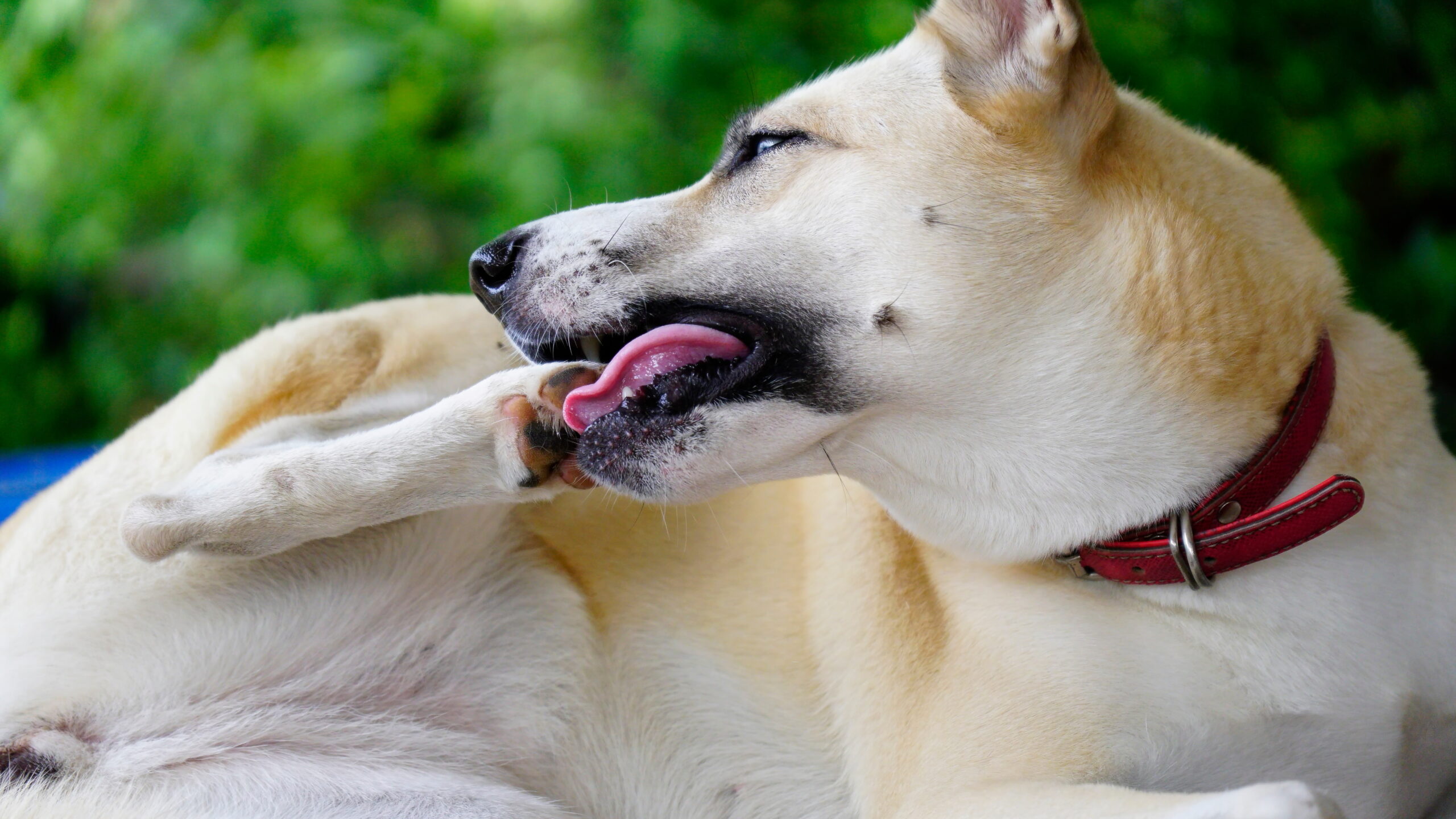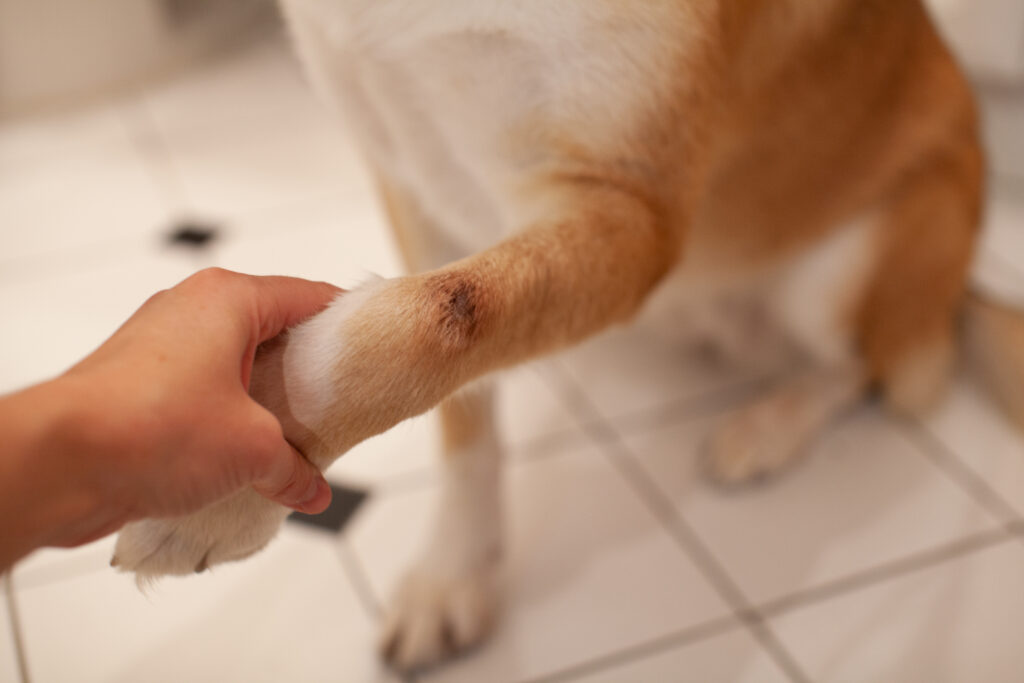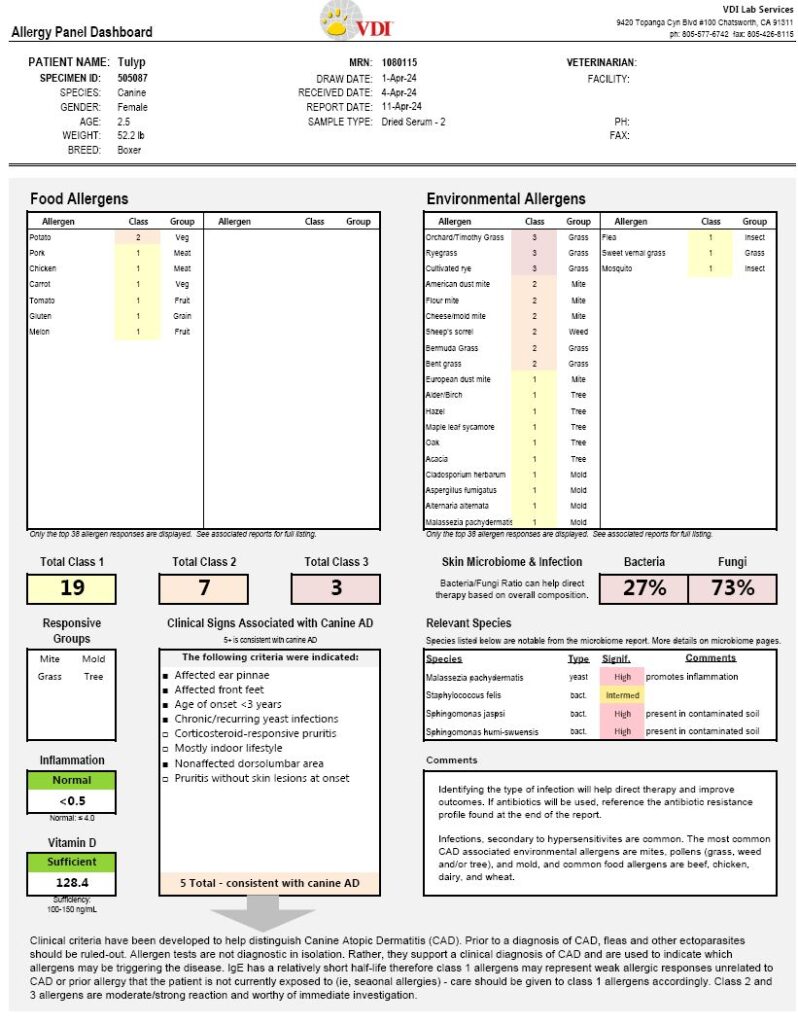
Allergic Dermatitis
& Infection Panel
Determine the exact species of infection and evaluate underlying allergies to expedite treatment and lifestyle decision making.
Atopy Testing – Overview
Canine or Feline
Atopy is one of the top issues why patients are seen in veterinary clinics. When skin lesions are present, understanding the microbial makeup of the infection can guide the appropriate treatment. But treating the atopy is only one part of the solution. Identifying if there are underlying allergies and correcting immune system deficiencies all help to create better outcomes that last. Get all that information and more with the Allergic Dermatitis & Infection Panel.

| Included Tests: | Skin Microbiome Panel Allergy Panel (IgE) – 125 Allergens Vitamin D & CRP/HPT |
| Test Methodology (microbiome): | Next-Generation DNA Sequencing (NGS) |
| Species: | Canine or Feline |
| Sample Type: | Skin Swab* & Serum Sample *requires microbiome collection kit |
What’s included?
- Complete bacteria and fungal quantification
- List of potential clinically relevant species
- Antibiotic resistance for relevant species, including a table of common antibiotics
- 125 Allergens – 53 environmental, 72 foods
- Allergy Cross Reactivity include Adverse Reaction to Foods (cARF)
- Vitamin D test & dosing guidelines
- Inflammation test
- Suggested product guide with partner products
Which pets should test?
- Atopic Pets
- Scratchy, Itchy, Red, or inflamed Skin
- Chronic Ear Infections/ Head shaking
- Excessive Licking of paws or skin
Sample Report (click to view)

Sample Collection
The Microbiome Panel requires a skin swab of the infection, collected and submitted using a Microbiome Collection Kit (MCK).
Learn more about VDI Microbiome Testing
NGS vs Cultures
Next Generation Sequencing (NGS) is a molecular based method that can sequence and detect the DNA of ALL microbes in a sample, without having to culture (grow) any of these organisms in a laboratory first. NGS is considered the gold standard for the detection and identification of microorganisms.
Traditional culture methods can only detect < 1% of all microorganisms, and most panels are targeted at certain pathogens- making educated guesses necessary. The NGS technology utilized by MiDog avoids these limitations, allowing for comprehensive detection of the bacteria and fungi, faster results, and no more “no growth” reports.
| GI Microbiome Panel* | Culture Testing | PCR Testing | |
|---|---|---|---|
| Diagnosis of ALL bacterial and fungal pathogens | YES | Only those that can grow in a lab | Limited to target panels |
| Antibiotic Resistance Profiling | YES | Only those that can grow in a lab | Limited to target panels |
| Pathogen Quantification | YES | Only those that can grow in a lab | Limited to target panels |
| Incubation/Growth Independent | YES | no | YES |
| Ambient Shipping/Storage Temp | YES | no | NO |
| Microbiome Profiling | YES | no | YES |
Importance of Antibiotic Resistances
The development and spread of antibiotic resistance results from antibiotic use, as well as intrinsic resistance exhibited by some pathogenic microorganisms. It is a growing concern for both humans and animals.
The Microbiome Panel can detect >46 acquired antibiotic resistance genes and reports intrinsic resistance of all microorganisms identified. By reporting both acquired and intrinsic antibiotic resistance, the panel helps guide veterinarians to choose the most appropriate antibiotic treatment, ultimately guiding good antibiotic stewardship.
